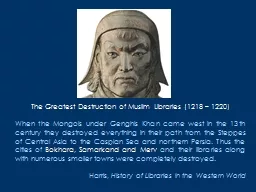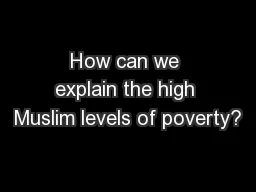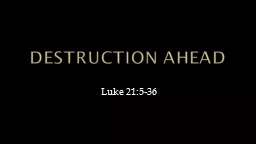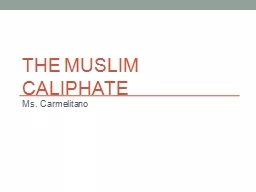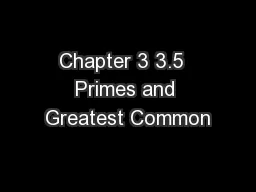PPT-The Greatest Destruction of Muslim Libraries (1218 – 1220
Author : phoebe-click | Published Date : 2016-05-28
When the Mongols under Genghis Khan came west in the 13th century they destroyed everything in their path from the Steppes of Central Asia to the Caspian
Presentation Embed Code
Download Presentation
Download Presentation The PPT/PDF document "The Greatest Destruction of Muslim Libra..." is the property of its rightful owner. Permission is granted to download and print the materials on this website for personal, non-commercial use only, and to display it on your personal computer provided you do not modify the materials and that you retain all copyright notices contained in the materials. By downloading content from our website, you accept the terms of this agreement.
The Greatest Destruction of Muslim Libraries (1218 – 1220: Transcript
Download Rules Of Document
"The Greatest Destruction of Muslim Libraries (1218 – 1220"The content belongs to its owner. You may download and print it for personal use, without modification, and keep all copyright notices. By downloading, you agree to these terms.
Related Documents

